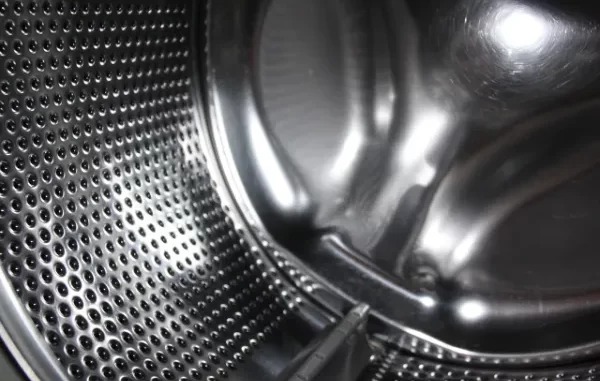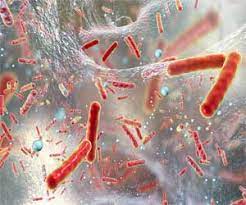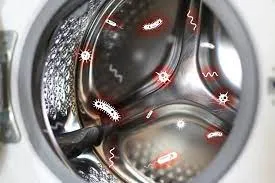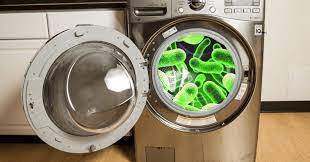
Washing machines are an invention that has made our lives much easier. However, there is concern about the presence of bacteria and germs in these machines. In this article, we will explore the issue of washing machine bacteria, discuss why they exist, and provide tips on how to maintain a hygienic washing machine.
The Silent Threat: Washing Machine Bacteria
Bacteria, fungi, and different microorganisms can be found around us, even in our washing machines. While they might not necessarily harm our health, the accumulation of these organisms can lead to odors and decreased washing machine performance. Potentially affect our well-being, especially if we have weakened immune systems.
Why Do Bacteria Thrive in Washing Machines?

Bacteria can grow in washing machines due to the following factors:
- Washing machines provide an environment that’s ideal for bacteria to flourish.
- After each cycle, there may be remnants of detergent and soap in the machine, which can act as a source of nutrition for bacteria.
- When laundry is washed at temperatures such as around 30°C or 86°F, it may not effectively eradicate bacteria, allowing them to survive and multiply.
- Neglecting to clean and maintain the washing machine on a regular basis creates an opportunity for bacteria to grow inside the machine.
Types of Bacteria in Washing Machines
Bacteria commonly found in washing machines are:
- Mildew fungi can flourish in washing machine environments, resulting in unpleasant odors and unsightly stains on your garments.
- E. coli: harmful bacteria of this kind might be found in washing machines, potentially leading to the risk of cross-contamination with your laundry.
- Staphylococcus aureus: This specific kind of bacteria is known for causing skin infections and has the potential to transfer onto your clothes if it exists in the washing machine.
Preventing and Managing Washing Machine Bacteria
It’s important to maintain the cleanliness of your washing machine and keep it free from bacteria. This will help extend its lifespan. Also, contribute to the well-being of your family. Here are a few tips you can follow:

- It’s important to clean parts of your washing machine, such as the detergent drawer, rubber door seal, and drum. To ensure disinfection and remove any buildup, you can run a cycle using vinegar or a specialized washing machine cleaner.
- When washing items like towels, bed linens, and underwear, it’s best to choose hot water cycles. Hot water is effective in killing bacteria and fungi.
- Be careful not to overload your washing machine, as it can affect the rinsing and cleaning processes. Follow the load-size guidelines provided by the manufacturer.
- Make sure to allow for ventilation. It’s a practice to leave the door of your washing machine open after each wash to ensure airflow and drying. This will help minimize the chances of mold growth.
- Exercise caution when using bleach. While bleach can be effective, for disinfection purposes, it’s important to use it. Follow the recommendations provided by the manufacturer to avoid any damage to your machine.
- Don’t forget to dry the rubber parts. After every wash, use a cloth to wipe down the rubber gasket and door seal. This will help remove any moisture and discourage the growth of bacteria.
Protecting Your Clothes with Clean Washing Machines

Keeping your clothes and yourself healthy relies on having washing machines, which is an essential aspect of maintaining a hygienic home routine. It’s not about ensuring that your favorite outfits remain free from stains; it’s about safeguarding your well-being. Although washing machines are designed to clean our clothes, they can unintentionally become breeding grounds for bacteria and allergens.
These unwelcome visitors can result in odors, skin irritations, and respiratory problems if not addressed promptly. Regularly cleaning and maintaining your washing machine, including the drum, detergent dispensers, and rubber seals, can prevent the accumulation of mold, mildew, and germs. Employing hot water cycles or using vinegar or specialized washing machine cleaners can effectively eliminate these contaminants.
By prioritizing the cleanliness of your washing machine, you prolong the lifespan of your garments. Also, cultivate a healthier environment for you and your family. Therefore, it would be unwise to underestimate the significance of a washing machine in both achieving clean laundry and promoting improved health and well being.
Battling the Laundry Room Microbe Menace
Taking on the challenge of dealing with bacteria in the washing machine is vital for anyone who cares about their well-being and keeping their clothes clean. Washing machine bacteria is easy to overlook. Our washing machines can become breeding grounds for these microorganisms. From bacteria like E. coli to mold and mildew, different germs can make themselves at home in the moist and soapy environment of our washers.
To overcome this issue, it’s crucial to understand how these bacteria enter and multiply in washing machines and explore effective ways to eliminate them. By being proactive in maintaining a hygienic laundry room, we can protect our families. Enjoy fresh clothes that are free from harmful microbes. This victory over the washing machine microbe menace ensures both cleanliness and good health.
The Hidden Dangers of Washing Machine Bacteria

Bacteria found in washing machines can sometimes pose risks that we often overlook in our laundry routines. One of the concerns is the health hazards they bring. Harmful bacteria, like E. coli and Salmonella, can thrive in the environment of a washing machine. If these bacteria come into contact with your clothes, they can cause cross-contamination, leading to skin irritations or serious health problems if ingested or inhaled.
Neglected washers can accumulate mold and mildew, releasing spores into the air that can trigger health issues and allergies, especially for those who are sensitive or immunocompromised. Apart from health worries, washing machine bacteria can also result in odors on your laundry, leaving your clothes smelling musty and less appealing to wear.
To address these concerns effectively, it is crucial to clean and maintain your washing machine to ensure that it remains a source of cleanliness and comfort rather than an unseen threat lurking in your home.
Defeating Bacteria in Your Laundry Appliances
Defeating bacteria in your laundry appliances is a critical task in maintaining a clean and healthy home environment. Your washing machine and dryer, which are supposed to keep your clothes fresh and free from dirt, can paradoxically become breeding grounds for harmful bacteria if neglected. Over time, residual detergent, moisture, and lint can create the perfect conditions for bacterial growth, leading to unpleasant odors and the potential for skin irritations or allergies.
To conquer these hidden foes, regular cleaning and maintenance are essential. Clean the detergent dispenser, rubber seals, and drum of your washing machine to remove any accumulated grime. Don’t forget to clean or replace the lint filter in your dryer as well. Additionally, consider using hot water cycles and specialized washing machine cleaners to thoroughly disinfect your appliances.
By taking these preventive measures, you can ensure that your laundry appliances work efficiently, and your clothes come out of the wash fresh and bacteria-free, contributing to a healthier living environment for you and your family.
Proactive Strategies for Washing Machine Bacteria Prevention

Preventing bacteria in your washing machine is a step toward keeping your clothes clean and your laundry room hygienic. Bacteria and germs can build up in the moist environment of your washer, causing smells and potential health issues. To address this, there are prevention methods you can follow.
Firstly, always leave the washing machine door open after a cycle to allow for air circulation and drying, which discourages the growth of mold and mildew. Secondly, make sure to use the right amount of detergent to prevent residue buildup. Additionally, consider using bleach or vinegar during a cleaning cycle to disinfect the interior of the machine.
Whenever possible, wash your laundry at room temperature, as this can help eliminate bacteria. Lastly, finish cleaning and disinfecting areas such as the detergent dispensers, rubber seals, and other vulnerable parts of your machine. By incorporating these practices into your routine, you can reduce the likelihood of bacteria in your washing machine while ensuring cleaner clothes and a healthier environment for doing laundry.
Conclusion: Washing Machine Bacteria

We explained that there might be hidden risks in your washing machine, such as bacteria. However, you can minimize their presence by following maintenance and hygiene practices. Make sure to keep your environment safe and hygienic by cleaning the machine using appropriate hot water for different loads and ensuring proper ventilation. By incorporating our tips into your routine, you can rest assured that your washing machine promotes cleanliness and contributes to a healthy home environment.






Leave a Reply